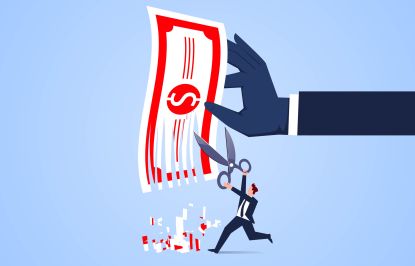Our highly experienced Kiplinger Letter team assesses the state of the U.S. economy and the events affecting it, producing regular forecasts on the outlook for the economy, to help you make better financial decisions.
Our experienced Kiplinger Letter team will update you on all the important developments (Get a free issue of The Kiplinger Letter or subscribe). You will always get updates first by subscribing, but we will publish many (but not all) of the forecasts a few days afterward online. Here’s the latest…
If spending cuts are required to resolve the looming debt limit crisis, they will likely be moderate and/or spread out over time, so as not to ding current GDP growth too much. However, any cuts that take place at a time when the economy is slowing will likely make that slowdown a little worse.
Subscribe to Kiplinger’s Personal Finance Be a smarter, better informed investor.
Save up to 74%
Sign up for Kiplinger’s Free E-Newsletters Profit and prosper with the best of expert advice on investing, taxes, retirement, personal finance and more – straight to your e-mail.
Profit and prosper with the best of expert advice – straight to your e-mail.
There is precedent for this sort of outcome. The 2011 debt limit fight between President Barack Obama and House Republicans resulted in $917 billion in cuts spread over 10 years, which reduced the immediate impact on the economy.
Lack of resolution to the debt crisis
But note that the White House is determined to avoid compromise, hoping instead that fissures in the GOP eventually drive moderates to its side. With no resolution, Uncle Sam can spend only the revenue coming in from taxes and other sources, triggering even more painful automatic spending cuts.
The timing of a potential crisis depends on June 15 quarterly tax payments. These could delay the moment of truth until late July or early August if they’re good. Otherwise, the debt limit would be hit in June, per recent Treasury Department warnings (opens in new tab).
Troubles with manufacturing
Manufacturing’s April expansion doesn’t mean the sector is out of the woods, despite a benchmark survey showing improvement in orders, production, hiring and exports.
Other parts of the survey indicate a future slowdown: Businesses think customer inventories are too high, which happens only when a downturn is coming. Manufacturer inventories and order backlogs are also contracting.
Still, it’s likely that any slowdown will be gradual, a source of frustration for the Federal Reserve, which had hoped for faster relief of price pressures.
Manufacturers face a dilemma with their suppliers. Facing parts shortages in 2021 and 2022, many had expanded the number of suppliers they worked with to hedge against supply chain risk. With demand waning, they’ll face a tough choice between the hard-won diversification of their supplier bases and preserving cash.
This forecast first appeared in the The Kiplinger Letter. Since 1925, the Letter has helped millions of business executives and investors profit by providing reliable forecasts on business and the economy, as well as what to expect from Washington. Get a free issue of The Kiplinger Letter or subscribe.
Read moreDebt Ceiling Will Be Averted but It Won’t Be Easy: Kiplinger Economic ForecastsKiplinger’s GDP OutlookKiplinger’s Inflation Outlook
